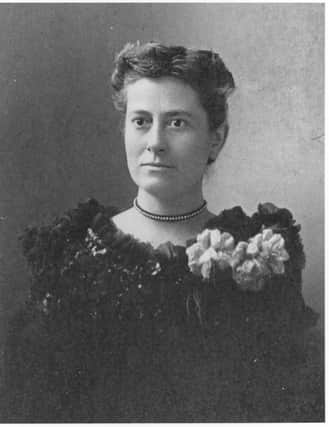Astronomer Williamina Fleming: a life written in stars


As she left Dundee in search of a new life, Williamina Fleming would not have known her future was written in the stars.
Pregnant when she arrived in Boston in 1878, Fleming’s husband - a bank worker 16 years her senior - was to abandon her and the couple's unborn child leaving her alone and destitute in a new land.
Advertisement
Hide AdAdvertisement
Hide AdDespite the personal crisis, Fleming, a child of nine whose father had died young, sought work straight away. It was her employment as a household maid that was to put her life on a course no one could have predicted.
Her employer was Edward Pickering, director of the observatory at Harvard University. Under his guidance she was to rise from her servant role to become one of America’s first female astronomers who played a critical role in the development of the university’s astronomy programme.
Fleming, the daughter of a Dundee engraver was later to have a lunar crater named after her.
She was first employed in the Harvard observatory in 1881 as a full-time copyist and “computer” - an old job title for someone who analysed information.
At the time Fleming arrived at the observatory, Pickering, who later spoke of the Dundonian’s fierce work ethic and lively mind, had just embarked an extensive program of celestial photography with thousands of images taken at night.
She was appointed to examine the spectra, the unique pattern of lines caused by the refraction of a star’s light through a prism.
Quickly she was to develop a new system of classification and in the 1890 edition of the Draper Catalogue of Stellar Spectra, she catalogued 28, 266 spectra of 10,351 stars on 633 plates. No one had recorded such a multitude of stars before.
It is said she examined 300,000 plates over her working life with the archive powering a string of Fleming’s astronomical discoveries.
Advertisement
Hide AdAdvertisement
Hide AdDuring her career, she discovered 10 novae, 59 gaseous nebulae, and more than 300 variable stars, plus the iconic Horsehead Nebula in Orion. She also recognized the existence of hot, Earth-sized stars later dubbed white dwarfs, according to Harvard University.
Dozens of young women worked under Fleming who was later put in charge of all studies published by Harvard University
In 1898, the Harvard Corporation appointed Fleming to be the curator of astronomical photographs at the Harvard College Observatory, making her the first woman to hold this important position.
Fleming continued to balance her increasingly successful career with raising her son, Edward, on her own.
Equal pay between the sexes was another area of concern for Fleming with the starting wage for female computers at Harvard just 25 cents an hour, considerably less than a man's wage.
After challenging Pickering on the issue, Felming wrote: “I am immediately told that I receive an excellent salary as women’s salaries stand.…Does he ever think that I have a home to keep and a family to take care of as well as the men?…And this is considered an enlightened age!”
She was made an honorary member of the Royal Astronomical Society of London in 1906 and was presented with a medal by the Astronomical Society of Mexico shortly before her death in 1911 in light of her discovery of new stars.